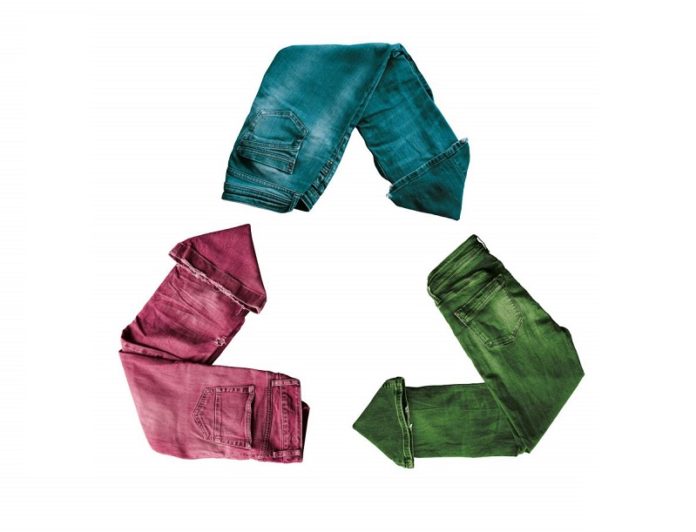When you think of Big Business, fashion probably isn’t the first thing that comes to mind. But as a $2.5 trillion dollar industry, apparel is one of the most important enterprises in the world. It’s also one of the biggest users of valuable commodities like water and energy. There are about 7.8 billion people on the planet today and the projected population for 2050 is 10 billion. More people will mean more demand and increased pressure on already scarce resources. But with limited raw materials, we cannot indefinitely create new and heedlessly discard the old. But ‘fashion’ means change, while ‘sustainable’ implies goods that continue to be used after they have lost their novelty. So can fashion ever be sustainable? Let’s explore.
Fast Fashion = Loaded Landfills
The average consumer today buys 60% more clothing than just 20 years ago. We’ve grown used to cheap, throw-away clothes. We wear it a couple of times, if at all, then toss it. The United States throws away about 85% of its clothes — some 13 million tons of textiles — each year. The United Nations Economic Commission estimates that 40% of clothing hanging in the closets of the developed world never gets worn even once. The obvious answer is to wear what you already own — and to not buy cheap, poorly-constructed apparel in the first place. Classic, quality pieces stand the test of time and save you money in the long run. By the way, fashion applies to more than clothing. No one needs another string of cheap plastic beads, whereas classics like pearls can last a lifetime. For example, a pearl choker never goes out of style and looks great with everything. Buying fewer things is better for the environment, and your wallet.
Shrink Your Footprint
When you wear your clothes for just one extra year, your carbon, water and waste footprints decrease by about 30% each. Another way to reduce waste is by paying attention to what your clothes are made of. About two-thirds of today’s apparel is made of some type of polyester. It’s hard to beat synthetics; they’re cheap, lightweight, and convenient. The problem is that manufacturing polyester requires a scarce resource, oil, and a lot of it: about 70 million barrels every year. Recycled polyester releases significantly less emissions than new, but polyester is not biodegradable and takes centuries to break down. Rather than buying synthetics, look into plant-based fibers, such as rayon, bamboo, viscose, tencel and modal.
Natural Is a Natural, Right?
Natural fibers are a better choice, but they come with their own pitfalls. Cotton requires vast amounts of water and is often grown in dry climates, increasing pressure on limited resources. Huge amounts of pesticides are sprayed on cotton, harming the environment and the workers exposed to them. Bio-couture is a movement in the fashion industry with the goal of finding more sustainable natural base fibers, dyes and biodegradable materials to reduce their environmental impact.
A Complex Chain
It can be hard to conceive of all the different processes that go into making clothes. The fibers need to be grown or created, then processed, sewn, and transported. Then at some point, the item will be disposed of. All of these steps make it hard to track exactly how much energy a piece of clothing will use over its lifespan, but let’s use the example of jeans. On average, it takes about 1,500 gallons of water to create a single pair. To put the number in perspective, that’s about as much water as your or I might drink in 5 years. Now multiply that by the 2 billion pairs of jeans that are made annually. About 3 billion people are currently dealing with water scarcity or stress, and that number is expected to more than double by the year 2050. When you buy clothes, choose those that are in their most natural state with minimal processing.
Invest in Humanity
Working conditions in the apparel industry can be appalling. It is estimated that some 40 million people are enslaved in the world, and manufacturing is one of the most common places to find enslaved laborers. Safety standards are often low and the work poorly paid. The vast majority of garment workers are female, and many are the primary breadwinner for their family. Another way to encourage sustainable fashion is by patronizing companies that have pledged to promote legitimate operations, including fair compensation. A living wage has been proven to benefit not only the workers but the business itself. When you buy from ethical enterprises, you help support a system that is both humane today and sustainable in the future.
Sustainability is not a trend. The need for sustainable goods is urgent and our very survival depends on figuring it out.
Sue Seabury is a content writer and editor at The Pearl Source, top online pearl jewelry retailer. Sue loves dark chocolate, exotic travel, and interesting conversation. She also loves a good love story, and never tires of writing about frilly gowns and the women who wear them.
Sustainable fashion stock photo by Puput/Shutterstock







